At the turn of the nineteenth and twentieth centuries, Art Nouveau spread across Europe and the United States. In the Austrian Empire the new art movement was called the Secession Style. The transition from historicism to modernism—which took place during this period as part of the struggle against academic art—chronologically coincided with a sharp increase in the national consciousness of nations and national minorities in Europe. Accordingly, it is not surprising that in places such as the multiethnic Austro-Hungarian Empire, national styles of the new movement appeared which incorporated historical or folkloric elements. In Galicia, the centers of the national style were Lviv and Kolomyja in eastern Galicia, and Krakow and Zakopane in western Galicia—each which developed a rather distinct vision of the style. In these places, the folk art of the Carpathian Mountains was the main source of inspiration.
The Emergence of the Zakopane Style
Zakopane is the main city in the Podhale region, also known as the “Polish highlands,” Poland’s southernmost region located in the foothills of the Tatra range of the Carpathian mountains. Podhale is home to the Gorals, an ethnographic group that shares features with other Carpathian Slavic highlander groups, including Hutsuls, Lemkos, and Boykos.
In the middle of the nineteenth century, as Zakopane developed into a popular ski resort, a construction boom followed to meet the housing and accommodation needs. The new buildings that appeared resembled Swiss chalets and French resorts—styles foreign to the region.
Rather than look to foreign influences for his work, architect Stanislaw Witkiewicz found inspiration in the local Podhale-style of architecture and folk art. By combining wooden framing, reinforced stone structures, and traditional folk motifs with elements of Art Nouveau, he created a new style that become known as the Zakopane Style.
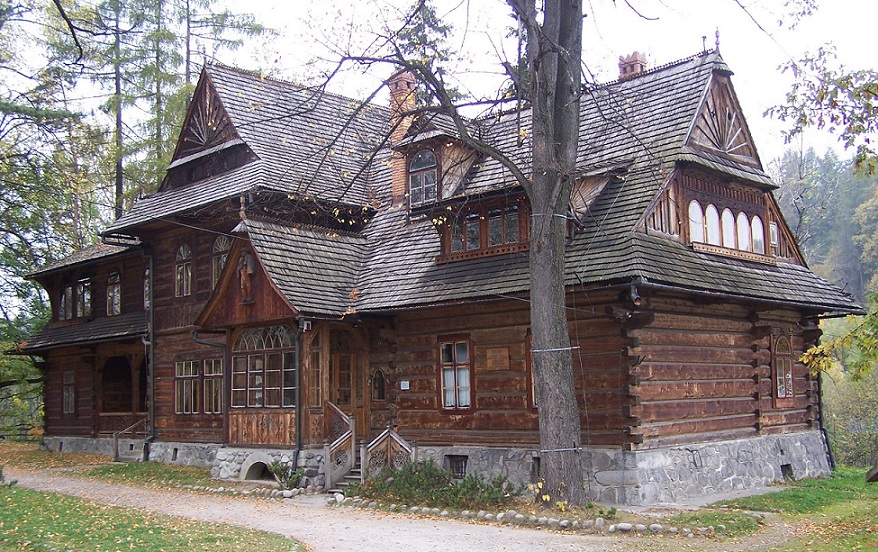
The emergence of the Zakopane Style coincided with a growing interest among intellectuals in the folk culture of Podhale. It was around this time that the first ethnographic collections were created and that Władysław Matlakowski, a surgeon, ethnographer, and researcher, published his excellent works on the architecture and decorative art of the Podhale highlanders, in particular: Budownictwo ludowe na podhalu (Folk Buildings in Podhale) in 1892 and Zdobienie i sprzęt ludu polskiego na Podhalu (Decoration and Domestic Utensils of the Polish People in Podhale) in 1901.
Matlakowski’s books summed up for his contemporaries the characteristics of Podhale architecture: “The buildings of the Gorals consisted of timber and stood on massive stones or oak post foundations. The center of the house was the hearth, which was surrounded by two or three rooms. The Gorals paid special attention to the decoration of the roof (particularly to the gables and the eaves), and that of the window frames and doors. The most popular patterns were the simple geometric ones and plant forms such as edelweiss, six-point compass rosettes, mountain thistle, sun motifs, and, first of all, the radiant sun on the gables,” from “Searching for Styles of National Architecture in Habsburg Central Europe.”
The radiant sun on the gables was a prominent, well-recognizable feature, unique to the region; however, the six-point compass rosette, also known as the six petal rosette or “gwiazda” in Polish—traditionally used as a protection symbol—was particularly widespread among the Gorals (as well as the Hutsuls and Boykos). In Zdobienie i sprzęt ludu polskiego na Podhalu Władysław Matlakowski writes that the “gwiazda” is “the most common and the most characteristic ornament in Podhale: it is found everywhere, but mostly on every crossbeam.” Indeed, throughout his books the gwiazda appears in illustrations of such items as spoon racks, chairs, distaffs, and lintels, but most notably on crossbeams. Accordingly, the rosette became a popular symbol in both the architecture and interior decor of Zakopane Style villas, and was prominently featured on ceiling beams.
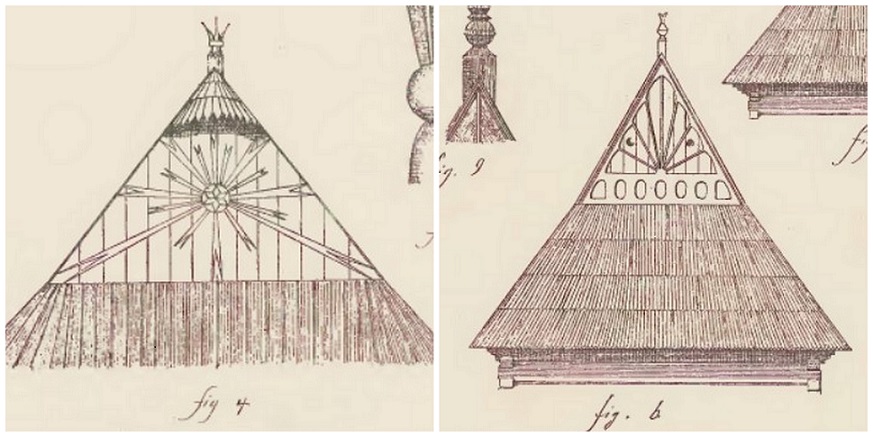
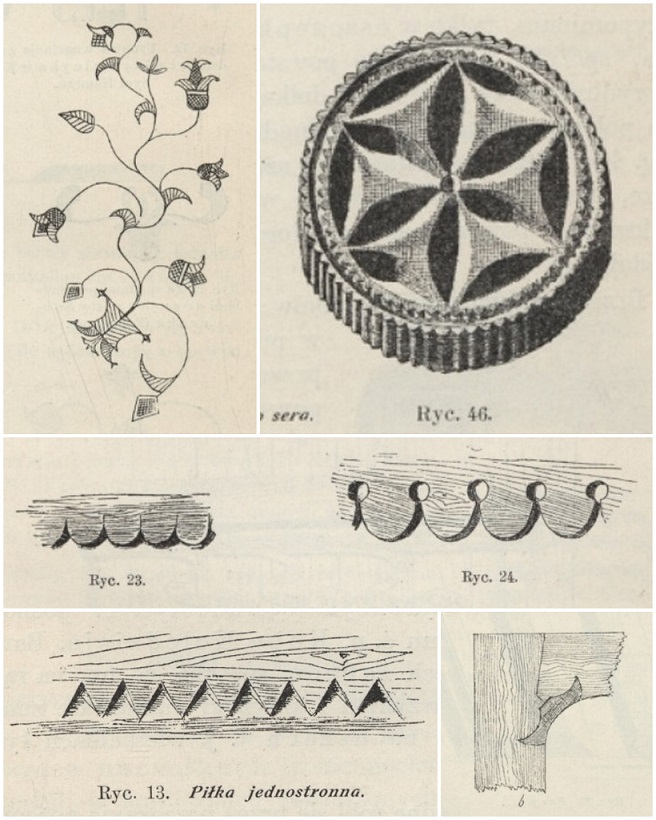
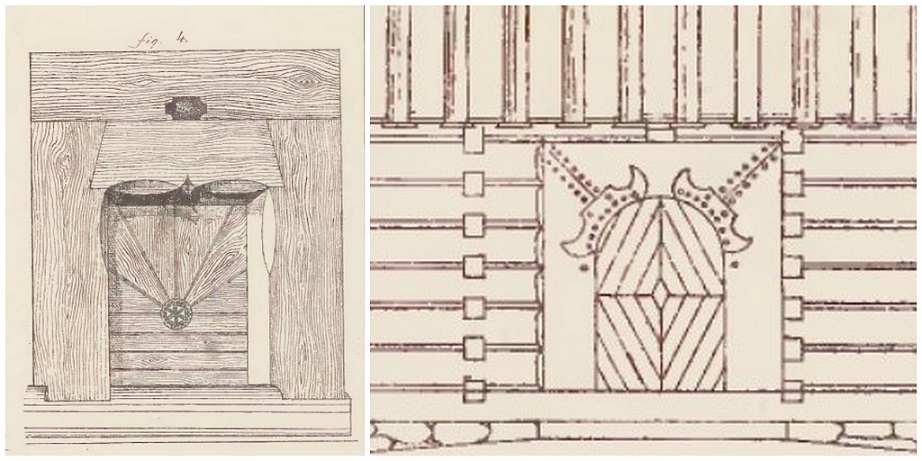
The Emergence of a National Style in Lviv
On the other side of Galicia, in Lviv, architects and artists also sought to develop a distinct national style. They, too, looked to the folk art of the Carpathians for inspiration, but this influence came from two directions: Polish architects attempted to develop the popular Zakopane Style, while nationally conscious Ukrainian architects sought to blend Secessionist elements with Hutsul forms, drawing from the folk art of the Kolomyia region. While the Zakopane Style had some advocates in Lviv, there was generally more interest in the traditional decorative forms of Eastern Galicia than in the architectural vernacular of the Podhale region. This blending of influences ultimately gave rise to a unique Carpathian style or what some contemporary architectural historians call Eastern Galician style.
In the 1890s, Julian Zachariewicz, a prominent Lviv architect, became one of the first in Eastern Galicia to incorporate Carpathian-inspired aesthetics into his designs. A professor and later rector at Lviv Polytechnic, he actively researched and collected local folklore and Hutsul art.
Another early promoter of Carpathian aesthetics was architect Edgar Kováts, among the first to blend elements from both the Tatra and Eastern Carpathian regions. In 1899, while serving as director of a carpentry school in Zakopane, he published The Zakopane Method, a book illustrating how motifs from Zakopane’s wooden architecture could be adapted to contemporary design. The following year, he designed the Galicia pavilion for the 1900 Paris Exposition, merging stylistic influences from both mountain regions. Kováts later joined Lviv Polytechnic as a professor and, like Zachariewicz, eventually became rector.
Between 1900 and 1903, art theorist and architect Kazimierz Mokłowski developed an idea for a Polish-Ukrainian architectural style in Lviv. Through a series of public lectures and articles, he reimagined the principles of Galicia’s wooden architecture and applied arts. In his 1903 book Sztuka Ludowa w Polsce (Folk Art in Poland), Mokłowski illustrated the significant similarities between the folk art of the Tatras’ Gorals and the highlanders of the Eastern Carpathians. He proposed that rather than following Witkiewicz’s highly localized Zakopane Style, architects should create a pan-Galician style rooted in Carpathian folk culture.
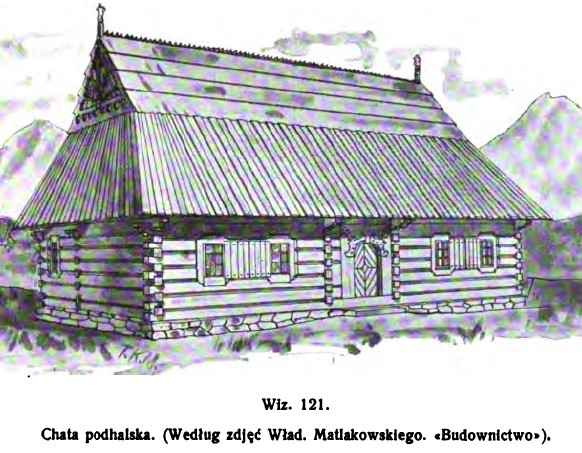
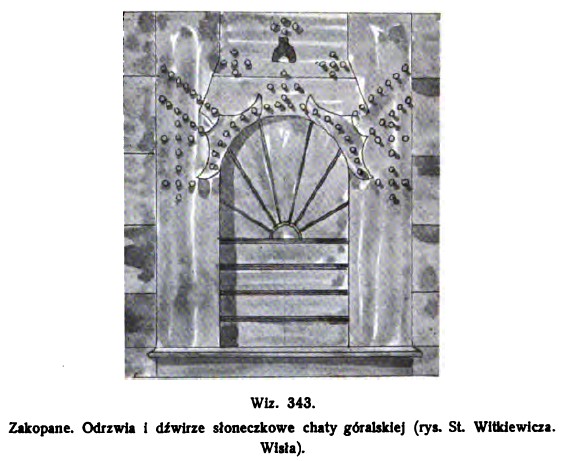
Tadeusz Obmiński and Oleksander Lushpynskyi, leading architects from Ivan Levynskyi’s firm, shared Mokłowski’s vision of a distinct national architectural style. Like Mokłowski, they laid the groundwork for their practice by studying traditional Carpathian wooden architecture in detail. These architects, along with others in Lviv, went on to design buildings that embodied this new, hybrid style, drawing on the folk architecture and decorative arts of both the Podhale and Hutsul regions. The resulting structures cannot be easily classified as strictly Zakopane Style or Hutsul Secession; rather, each reflects a blend of these influences, with some designs leaning more toward one than the other.
Nonetheless, some structures were built with a heavy eastern Carpathian influence, in the Hutsul Secession. This style found its most vibrant expression in the work of Ivan Levynskyi’s architectural firm, where architects like Tadeusz Obmiński, Oleksander Lushpynskyi, and Lev Levynskyi brought this artistic vision to life. This unique style appears not only in Lviv but also in several other towns across Galicia.
Characterized by its dynamic and expressive forms, the style features fluidly shaped doorways, windows, and awnings, along with intricate contours of steeply sloped roofs, which are sometimes adorned with towers reminiscent of Hutsul church bell towers. Folk art’s influence shines through in the bold use of metal and ceramic detailing, which enhances each structure with a rich palette and decorative artistry.
It is also important to note that when the Zakopane Style spread to major urban areas such as Krakow, Warsaw, and Lviv, it was adapted to brick construction, with only certain details made from wood. As such, the timber cottage outlays, together with studs and lattice-work, were transformed into masonry. Furthermore, popular motifs—such as the six petal rosette, the radiant sun, and flowers—traditionally carved in wood in Zakopane architecture were now applied to stone and appeared in non-traditional places.
The Zakopane Style in Lviv
Tadeusz Czarnecki and Felicja Smulikowska’s House
Location: 38-40 Pekarska St.
Built: 1904-1906
Architect: Kazmierz Mokłowski
One of Lviv’s best examples of Zakopane Style. Here wooden architecture is literally transmitted in stone. On the facade of building 40, the rustication on the ground floor imitates the stone foundations of a folk cottage, while the entire facade of building 38 mimics a cottage’s timber walls together with concrete locking joints typical of log construction. The small gable atop of 38 features the radiant sun stylized in brick and cement.
The contour of the windows and door frames were cast from concrete so as to emulate wood. The balconies’ corbels, also made from concrete, display folk motifs, in particular six petal rosettes and flowers. The wooden doors are also decorated with folk motif carvings, while the ironwork on the doors’ windows are stylized into radiant suns.
Inside number 38 the hallway leading to the courtyard is paved with wood and with even the panels are upholstered with carved wood. The hallway ceiling is supported by brackets imitating folk wood sculpture. The ceiling has folk-themed moulding, and the middle of both sections features a large six petal rosette, a symbol that was once carved onto the middle of crossbeams to protect the home from thunder strikes.
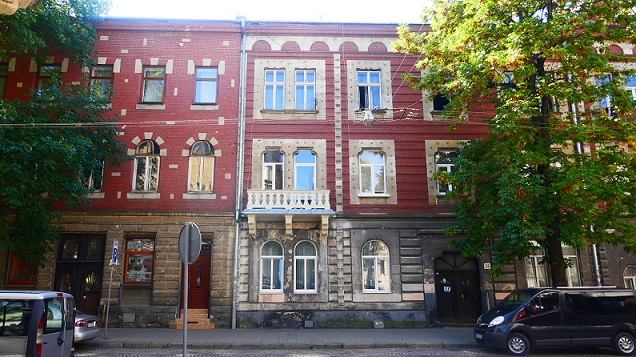
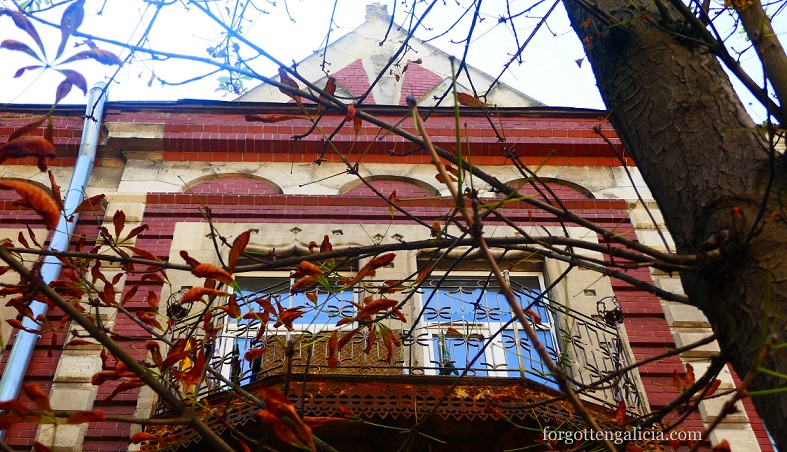
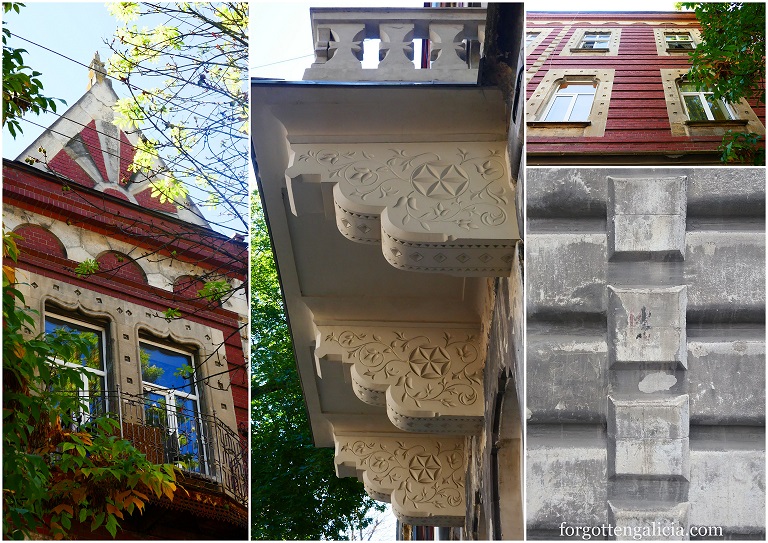
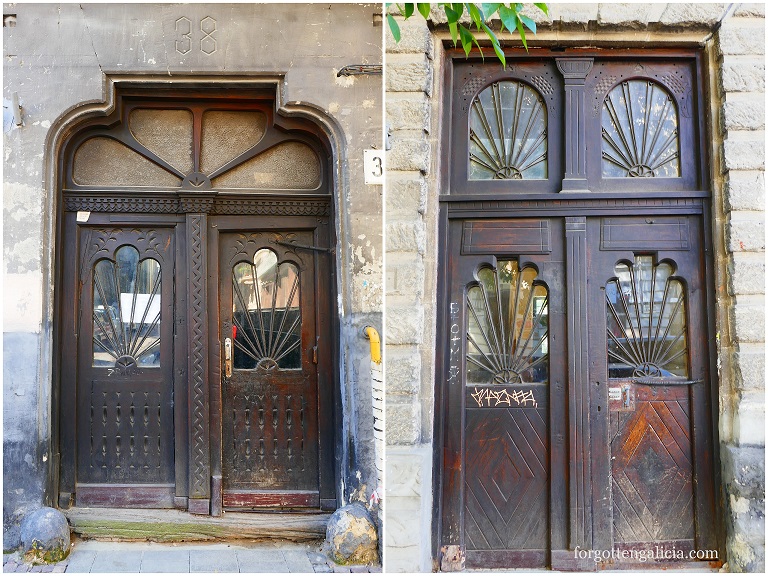
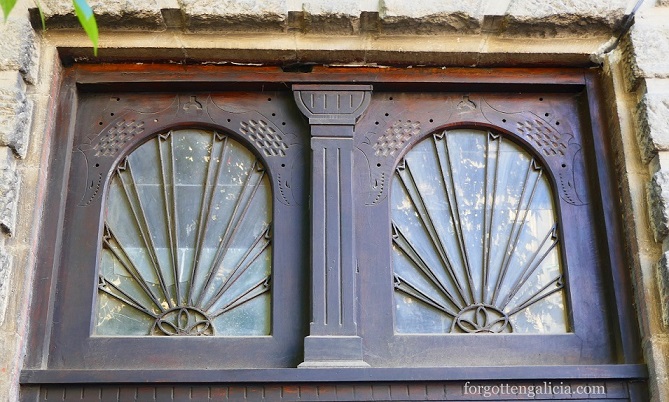
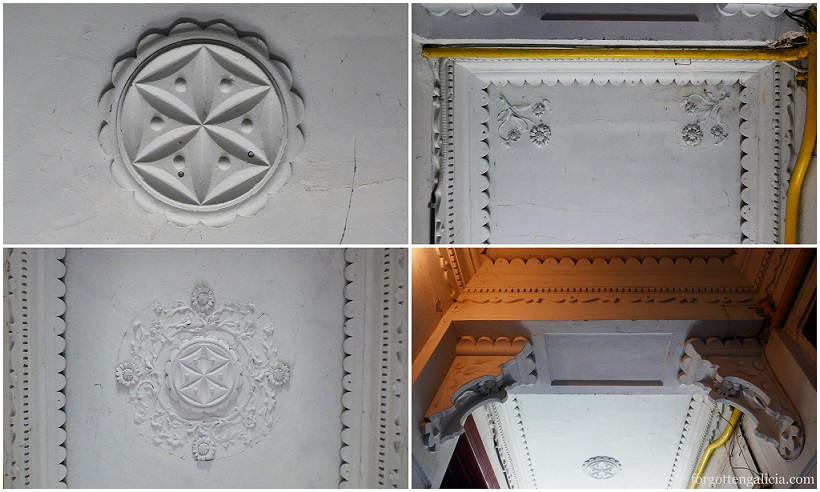
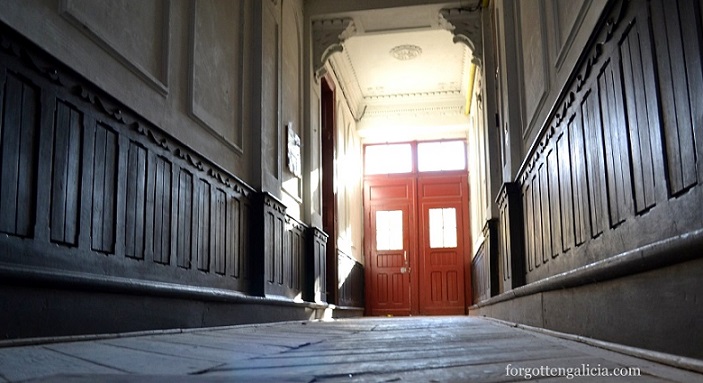
Ludwik Heller Villa
Location: 7 Melnyka St.
Built: 1905
Architect: August Bogochwalski
The villa was built for the director of the municipal theater Ludwik Heller. The leading decorative element is the sun motif, which was customarily carved onto the wooden gables of the Zakopane cottages. In the villa the sun, augmented in scale, is copied onto the plaster, while on the loft and the veranda it is molded in wood, and on the door lattice it is forged in metal, thanks to which the villa is classified as an example of the Zakopane Style.
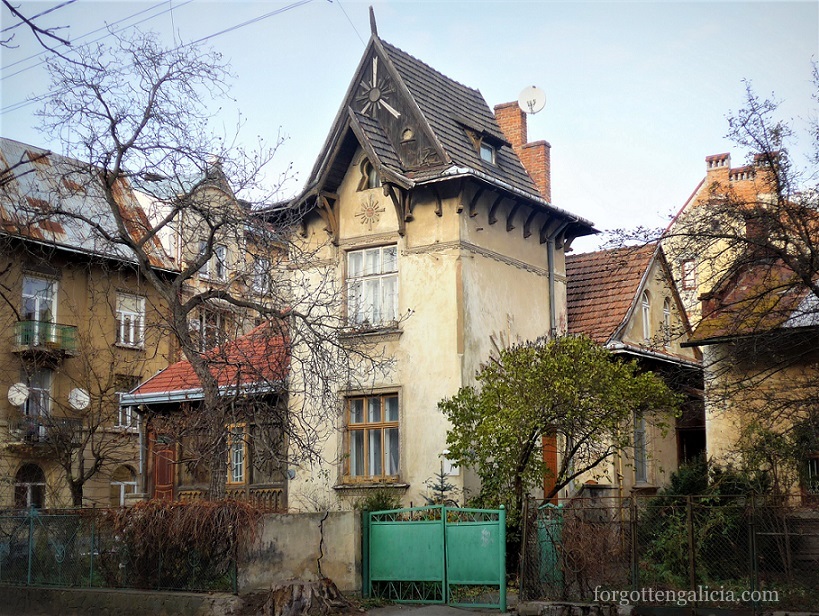
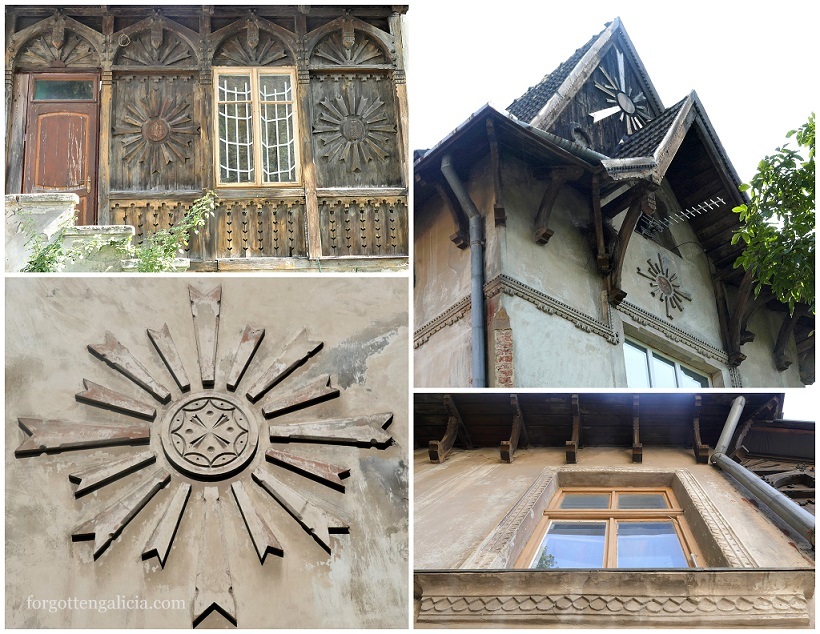
Józef Skwarczyński Tenement House
Location: 11a Chuprynky St.
Constructed: 1906-1907
Architect: Built by Ivan Levynskyi’s Firm, Oleksander Lushpynskyi the likely co-architect
This two-floor tenement house was built for Józef Skwarczyński and has both Hutsul and Zakopane influences, as well as Secession ornamentation. The facade mimics the details of log construction and the east side even includes stone notches that resemble the primitive jointing of typical Zakopane wood construction techniques. Decoratively carved wood beams support the roof over the gables and create a design reminiscent of the radiant sun. The balconies’ concrete balustrades emulate wood and feature carvings of the six petal rosette. A strong Secession influence is also found in the ornamentation, in particular of the door and the design on the painted tiles.


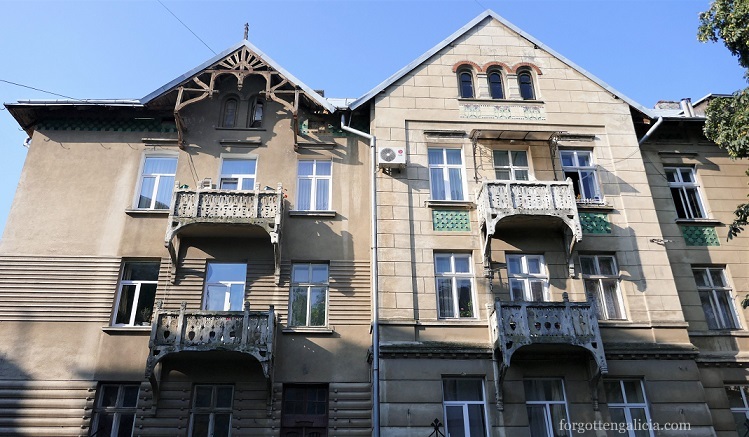
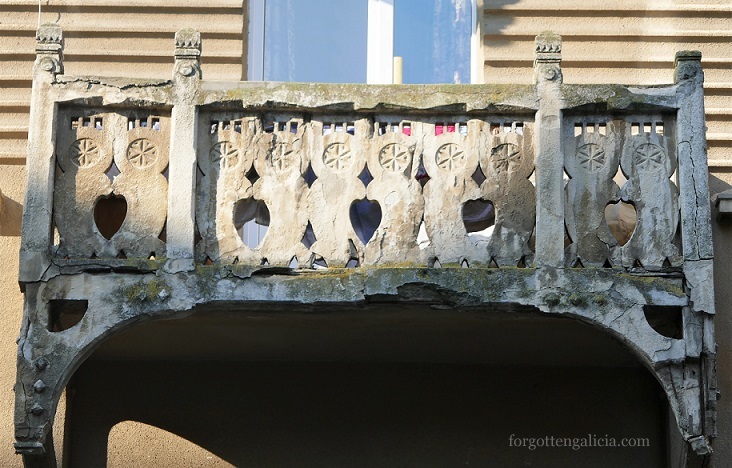

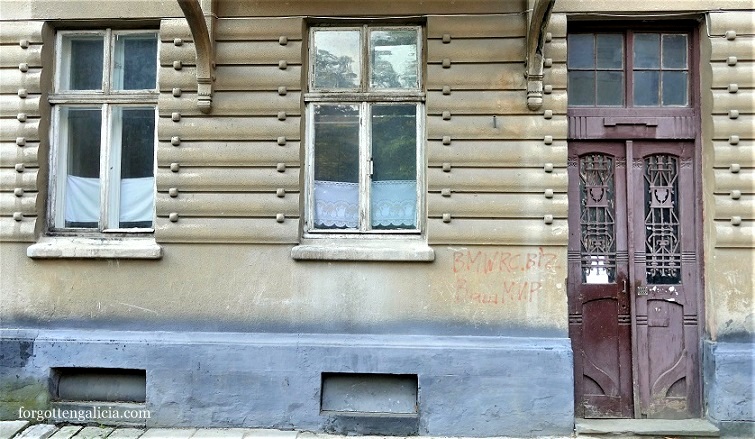
Solecki Clinic
Location: 107 Lychakivska St.
Constructed: 1908
Architect: Oleksander Lushpynskyi
The clinic was constructed as a sanatorium of the Red Cross; until the First World War it belonged to doctor Kazimierz Solecki.
The building was constructed in the Art Nouveau style with elements of the Zakopane style and Hutsul motifs. The main façade has a protruding central avant-corps crowned with a side wall roof with a sun motif characteristic of the Zakopane style and carved corbels. The façades are adorned with ceramic panels with Art Nouveau ornamentation and a stylized rusticated belt separating the socle section of the building riveted with natural stone.
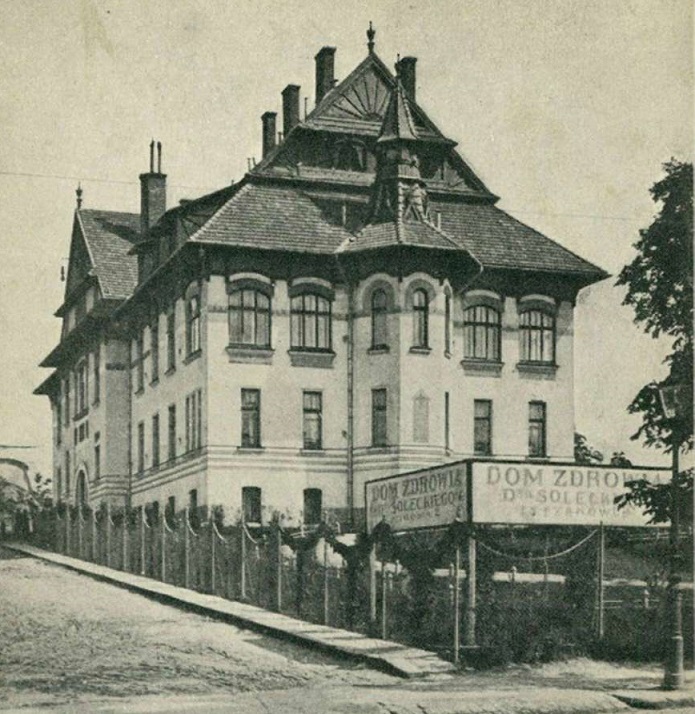
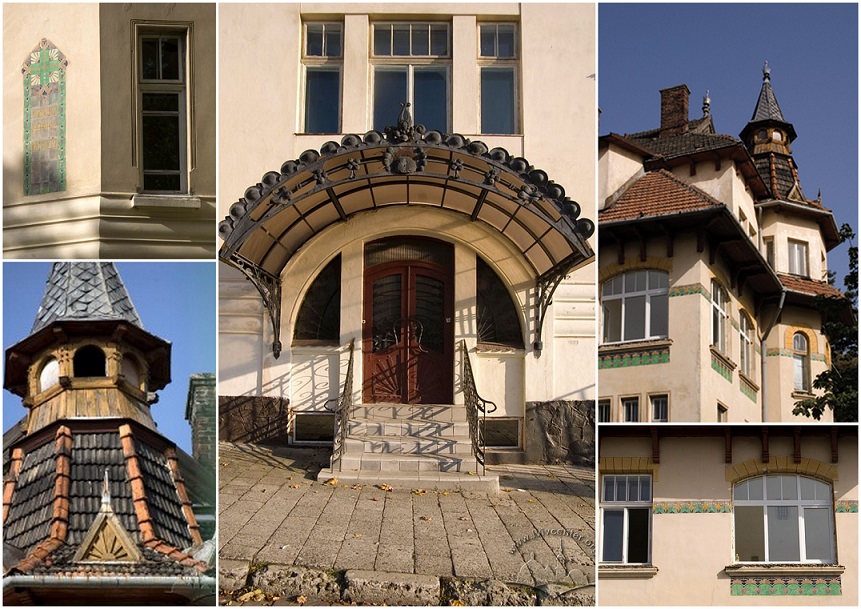
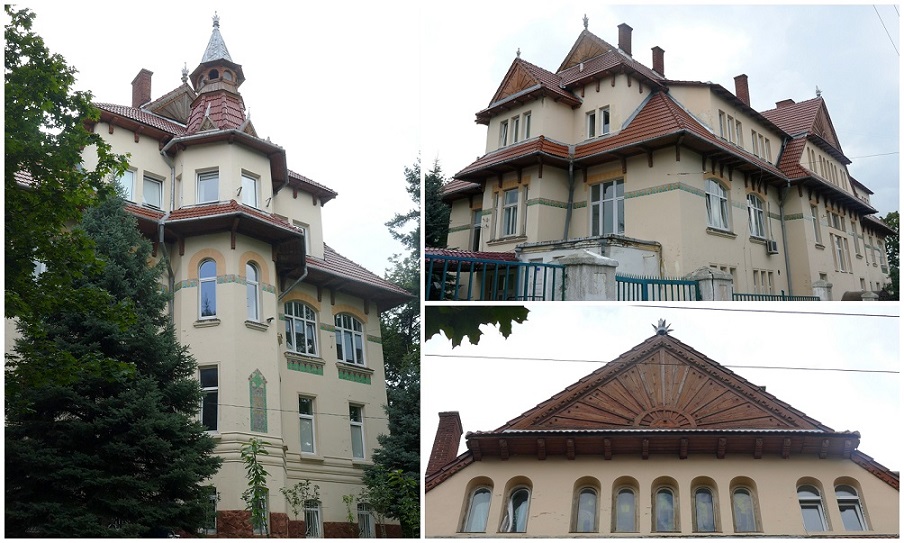
Dormitory of the Academic House 21 Kotsiubynskoho St.
Location: 21 Kotsiubynskoho St.
Constructed: 1904-06 by Ivan Levinskyi’s firm
Architects: Tadeusz Obmiński, Filemon Levytskyi, and Oleksander Lushpynskyi
Funded by: Ye. Chykalenka and Mykhailo Hrushevsky
Built in Secession style featuring Hutsul ornamentation as well as elements of the Zakopane style. Adaptations of the wooden construction of the Carpathian highlanders as well as Hutsul applied art can be found in this building. The majolica friezes with Hutsul ornamentation, which serve as the main accent of the building, are located under the eaves as well as on two tiles under each window of the upper floor. The riveting on the window frames is reminiscent of the Zakopane aesthetics.
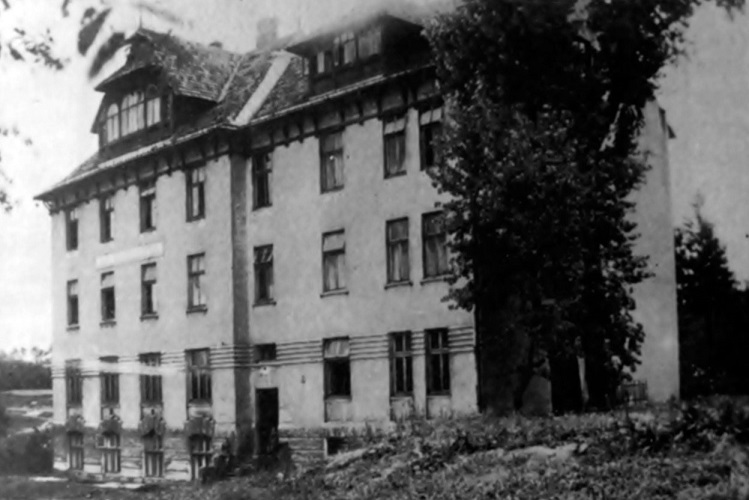
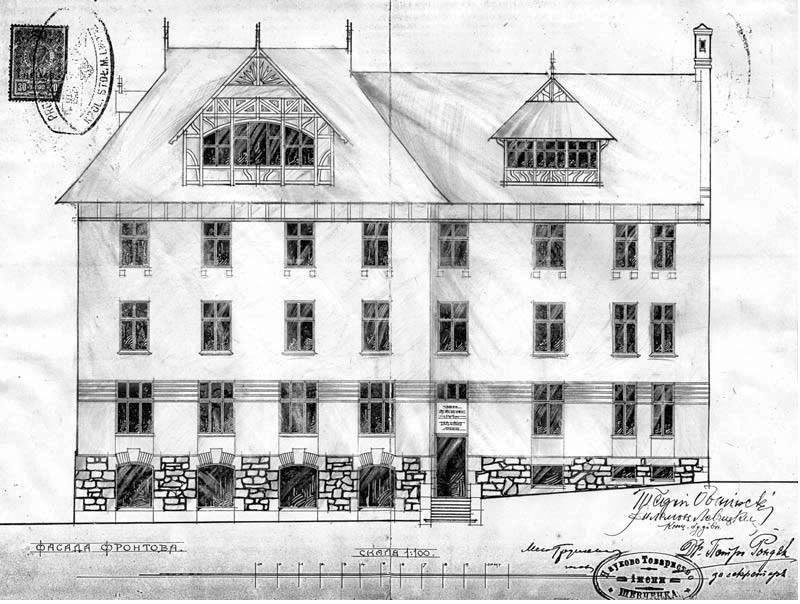
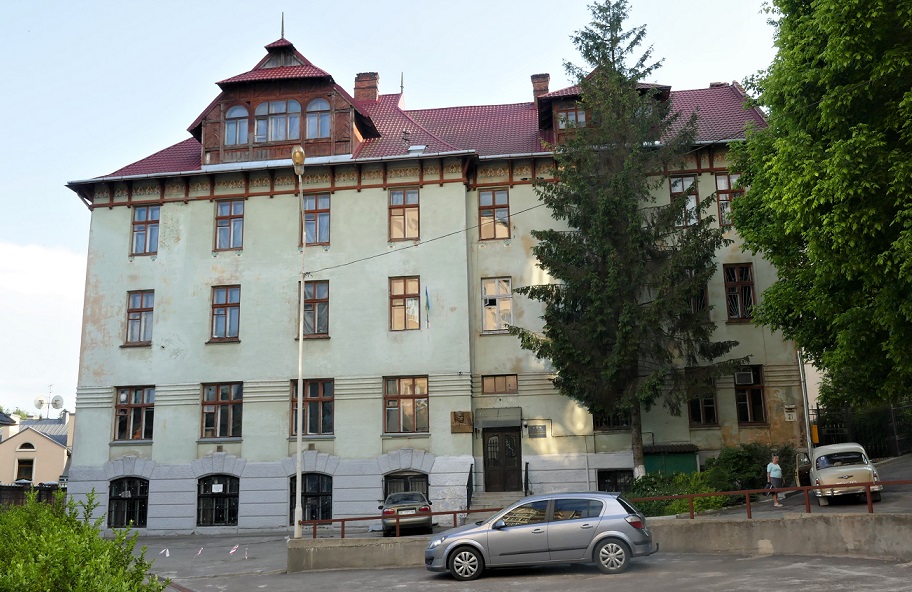
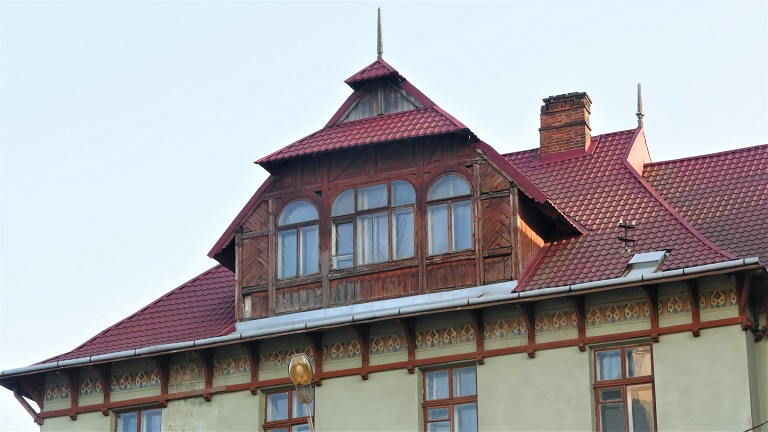

Residence at 29 Vyshenskoho St.
Built: 1909
Architect: Adam Opolski
Commissioned by: Michał and Stefania Zawojski
A two-story residence located on a street built in 1909-12 as an elite district. The first floor facade mimics timber construction, while the gable features sun rays typical of Zakopane Style as well as a six petal rosette. Radiant suns are also found above the second-floor windows.
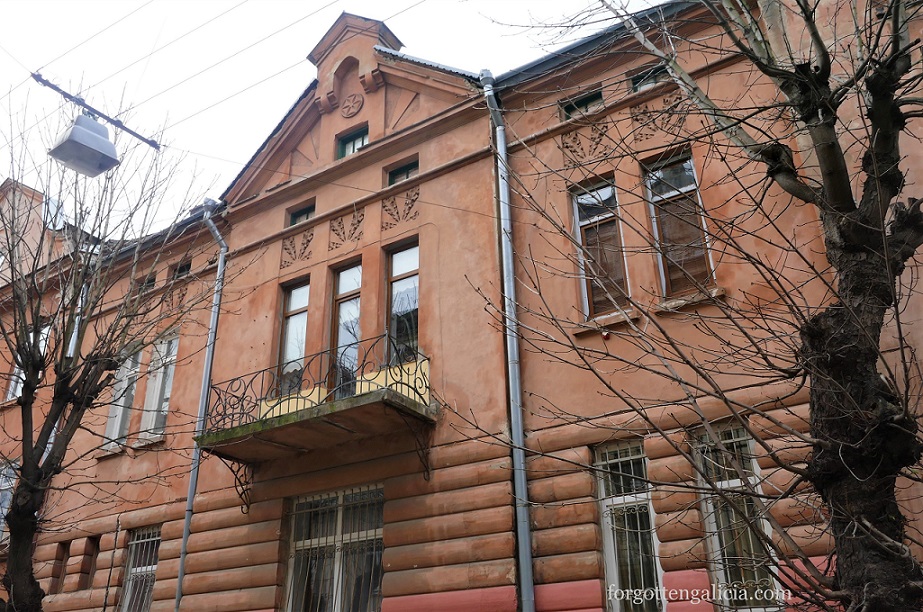
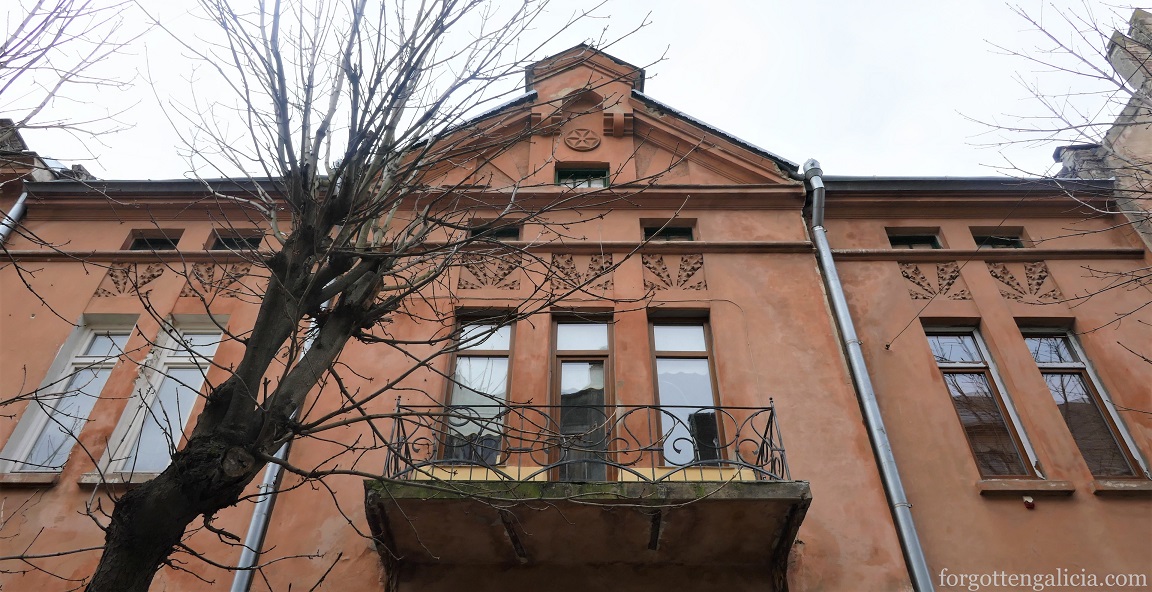

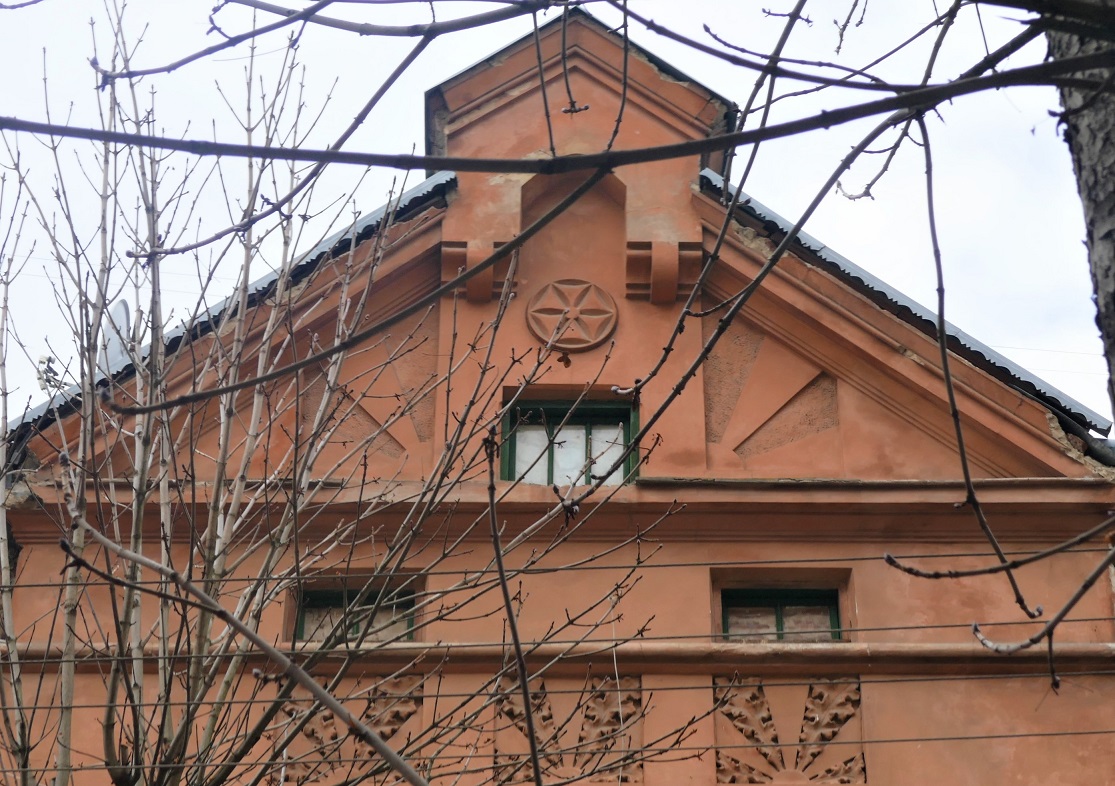
Doctor Marian Panchyshyn’s Villa
Location: 3 Karmeliuka St.
Built: 1923
Architect: Kazimierz Teodorowicz

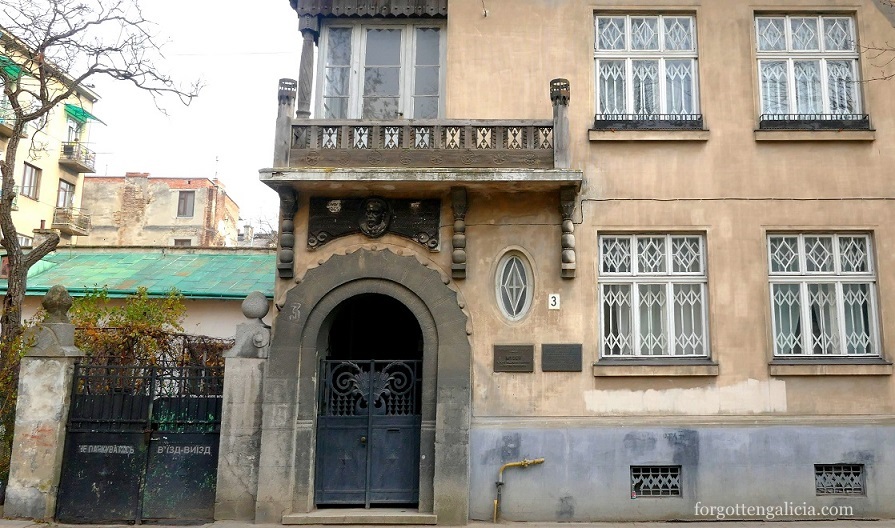
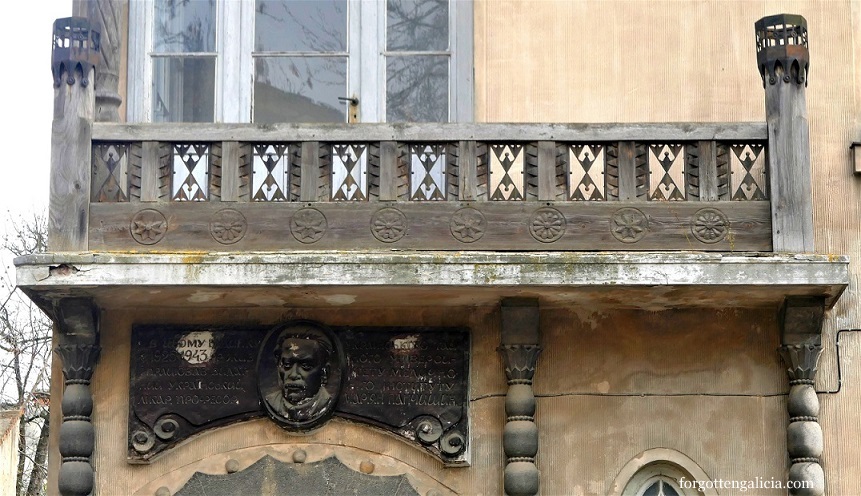
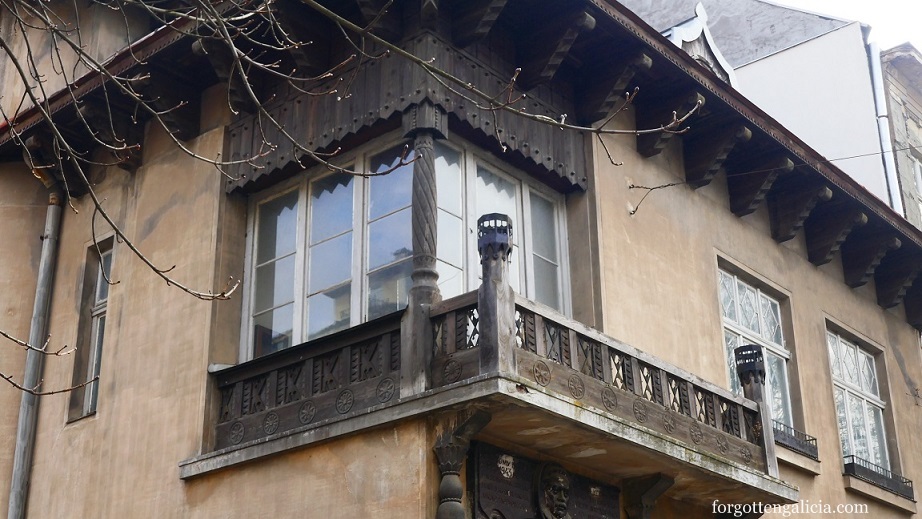
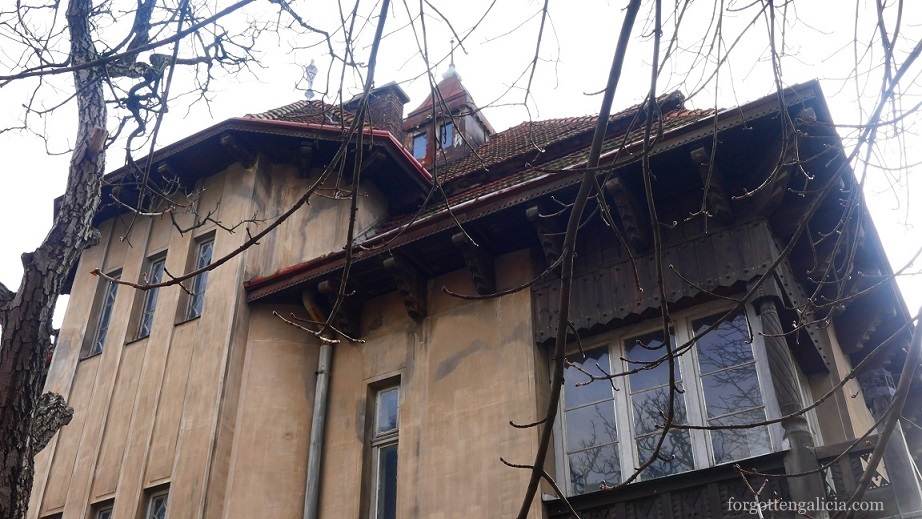
Designed as a residence and office for Marian Panchyshyn, a professor of medicine and an enthusiast of the Ukrainian Romanticism. A late version of Art Nouveau National Style with Art Deco aesthetics and elements of Carpathian folk architecture and the Zakopane Style. The wooden carvings on the second floor corner balcony resemble solar symbols, once widely used in Carpathian folk architecture, while the wrought iron insertions are executed in the Art Deco style. The roof is enforced by wooden corbels with carvings characteristic of the Zakopane Style.
Written by Areta Kovalsky
Sources:
Dániel Veress, “Searching for Styles of National Architecture in Habsburg Central Europe 1890-1920. Art Nouveau and Turn-of-the-Century Architecture as Nation-Building,” Master Thesis, Charles University in Prague, 2013
Edyta Barucka, “Redefining Polishness: The Revival of Crafts in Galicia around 1900,”Acta Slavica Iaponica, Tomus 28, pp. 71‒99
Zanna Komar, Julia Bohdanova, Secesja we Lwowie
Юрій Бірюльов, Мистецтво Львівської сецесії, Видавництво Центр Євопи, 2016
The Zakopane Style, Wikipedia
Władysław Matlakowski, Budownictwo ludowe na podhalu, 1892
Władysław Matlakowski, Zdobienie i sprzęt ludu polskiego na Podhalu, 1901
Kazimierz Mokłowski, Sztuka Ludowa w Polsce, 1903

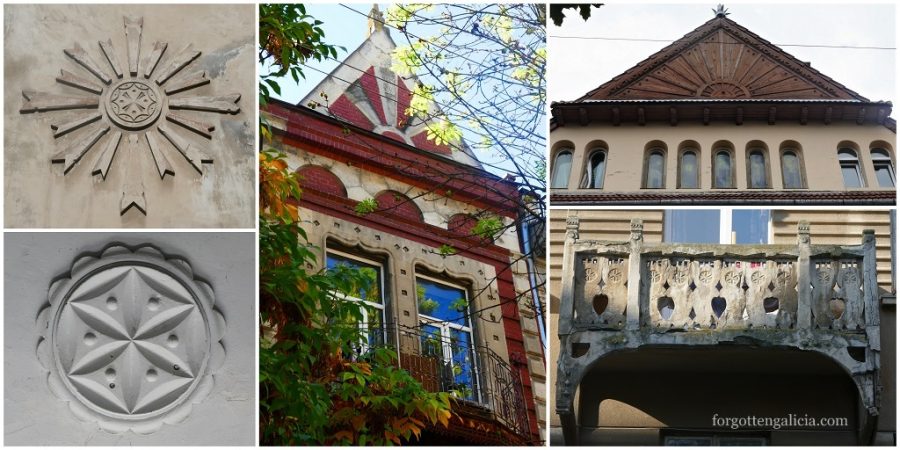




Commendable job on the blog, both it’s form and content. Creative. Interesting choice of niche topics. Impressive depth of research. Congrats!
Check out my blog on all things architecture, history, spirit of place, and lifestyle:
http://inspiredsnobtravel.com/
Thank you! And I’ll definitely take a look!
This is really interesting. I live in an area of Canada with (or near) a particularly high Polish population.
I have seen those sunbursts set into eaves here. I wonder if thats coincidence?
Interesting… not sure, maybe it’s not just a coincidence 🙂